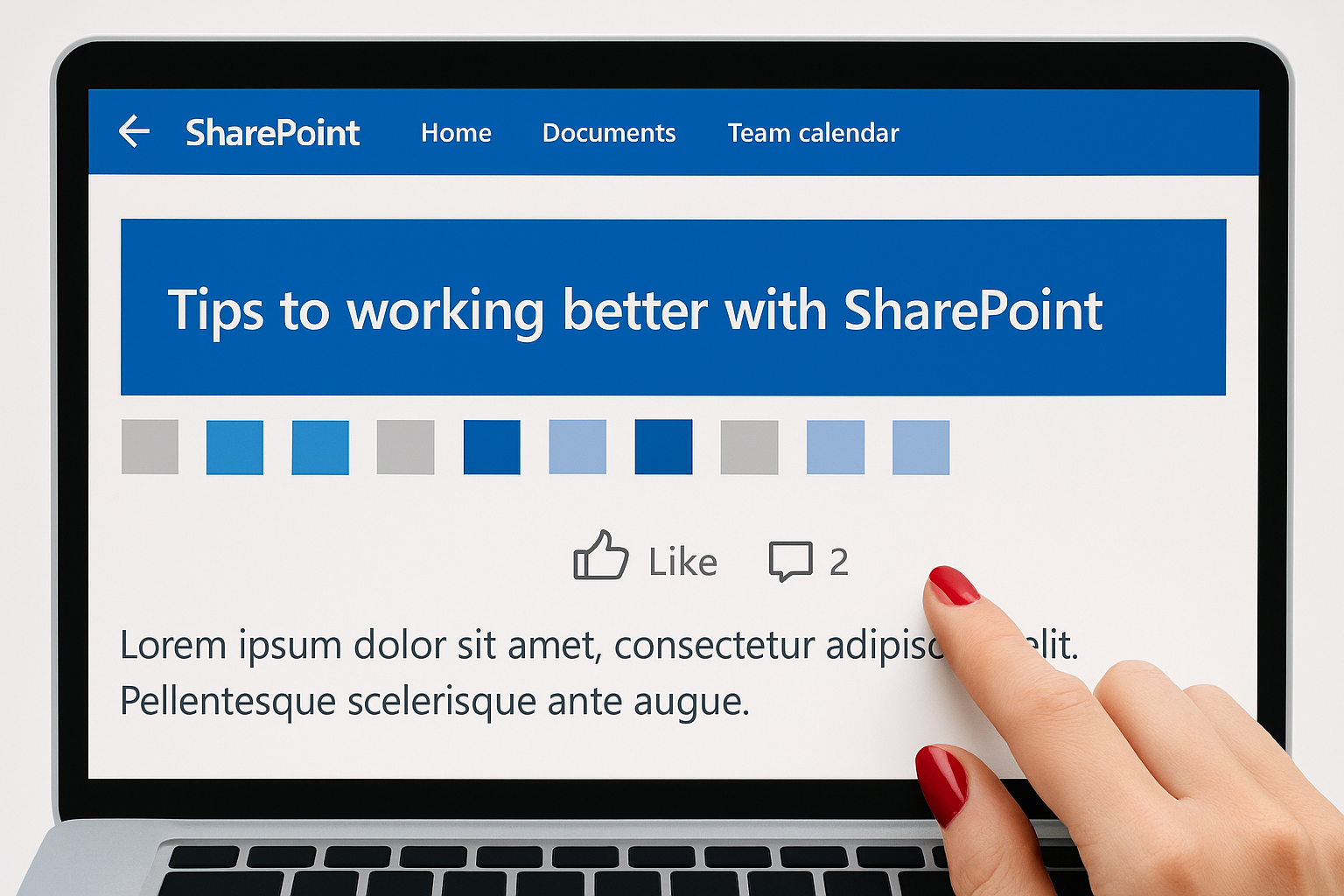Why “Like” and “Comment” Features Should Be Disabled in SharePoint Sites
In our wonderful age of digital collaboration, SharePoint is continuing on its march to be what it is – a great platform for content publishing, knowledge sharing and governance (my go to!). But not every feature should be enabled in every site. Two of the most deceptively harmless and sometimes mis-understood in terms of impact are the ‘Like’ and ‘Comment’ options on SharePoint modern pages.
While Like and Comment, classed as social features may seem like a ‘Oh yes! Let’s enable them throughout because doing that will increase engagement’ Utopian statement, enabling them can undermine governance, compliance, and clarity. This is especially true in structured, regulated or formal SharePoint sites.
Why? Brainstorm time:
- Governance and Compliance Risks
- Unmoderated Feedback: Comments are not subject to approval workflows using any automation engine. Anyone with access to the site from a contributor perspective can post; and guess what, those posts are immediately visible to others;
- Audit Gaps: Comments and Likes are not version controlled. They are not visible in any audit trails, so that makes them invisible to compliance reviews. Forget using say Microsoft Purview to try track Likes or Comments – these interactions are not captured in Purview logs;
- Policy Confusion: When users comment on pages, those comments create the illusion of a ‘feedback loop’. There would be no mechanism to act on them.
- Content Integrity and User Experience (UX) Clarity
- Noise Over Signal: Comments can dilute the authority and authenticity of ‘official’ content. Users can post anything – post questions, complaints, or off-topic remarks.
- Visual Clutter: The social bar (Like, Comment, View Count, Save for Later, etc.) adds UI elements that may distract from the page’s purpose. So, not at all useful for pages whose key objectives are Dashboards, Standard Operating Procedures (SOPs), or compliance repositories.
- Misleading Metrics: A “Like” on a ‘policy page’ does not mean the content of that page is understood. ‘Like’ is classed as simply a ‘vanity metric’ that can mislead stakeholders.
🛠️ 3. Operational and Technical Limitations
- No Central Moderation: SharePoint does not have an Out-Of-The-Box (OOTB) ‘centralised comment moderation’ dashboard. Site ‘owners’ must manually monitor each page on the SharePoint site.
- Default Enablement: If comments are enabled by default on modern pages this leads to no proactive governance – proliferate unnoticed.
- No Alerts: Page owners will never receive notifications when comments are posted. This leads to stale and/or unaddressed feedback.
Example: Healthcare Intranet Misstep
Time to give you an example as to how a mid-sized healthcare provider learned the hard way. They launched a SharePoint Online communication site to publish internal policies, including those related to patient data handling and emergency standards. Unknown to the governance team, Like and Comments were enabled by default on every page on the SharePoint tenant. So, every page being created going forward on their SharePoint site had Like and Comments enabled.
Within weeks:
- Staff began posting unmoderated feedback on sensitive policy pages;
- Some comments included anecdotal patient references, violating internal privacy standards;
- Others expressed disagreement with procedures, creating confusion about which policies were enforceable;
- No one was alerted—the comments sat visible for weeks before being discovered during a routine audit.
The fallout?
- A formal compliance review;
- Emergency PowerShell scripts to disable comments across the tenant;
- A new provisioning routine to enforce social feature settings;
- Mandatory training for site owners on page settings and governance.
Best Practices for Disabling Social Features
- Disable Comments Per Page: Use the page settings UI or PowerShell (Set-PnPClientSidePage -CommentsEnabled $false);
- Hide the Social Bar: Use custom page templates or SPFx extensions to remove Likes, Views, and Save for Later. Check out the SharePoint Frameworks SPFX examples;
- Automate at Scale: Include social feature settings in your site provisioning scripts or site designs;
- Educate Site Owners: Make social feature governance part of your SharePoint training and onboarding;
- Define the Environments. In a SharePoint / Teams instance mixed environment, split your governance based on the kind of collaboration needed. Things like Like and Comments are ‘post’ oriented and more related to the Teams Client than a SharePoint page.
My final thoughts to project to you 😊
In SharePoint, not every feature is a fit and ‘yes plonk every feature’ for every site. ‘Likes’ and ‘Comments’ are a part of Community / Project environments such as Microsoft Teams (Posts in Channels) or say Yammer-integrated pages. For policy repository based sites, policy pages, compliance dashboards, and formal communications – a governance liability.
Disable them by default. Enable them only with intent









